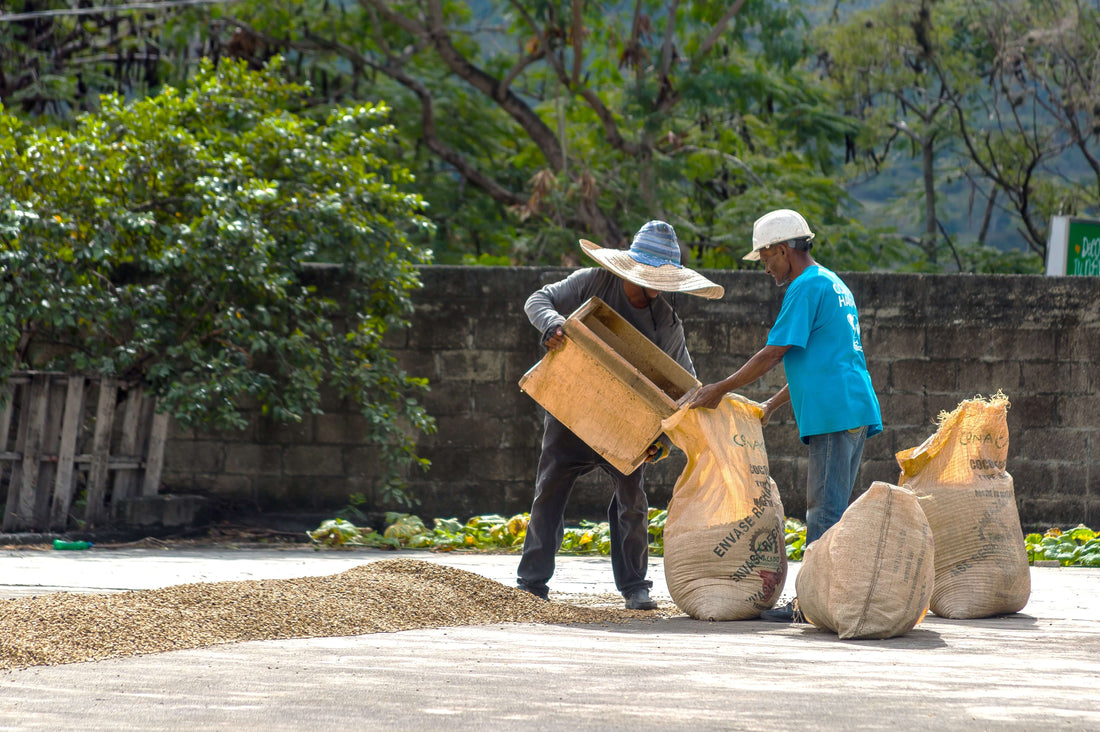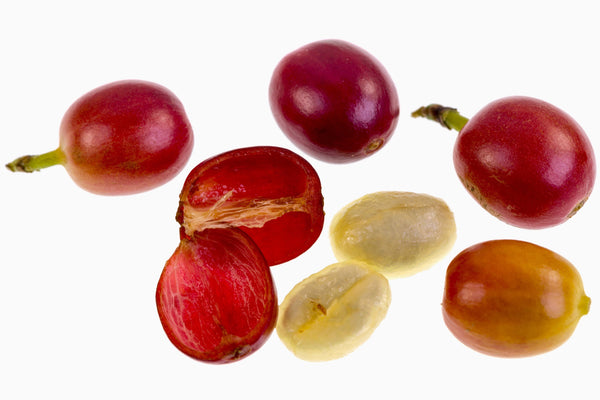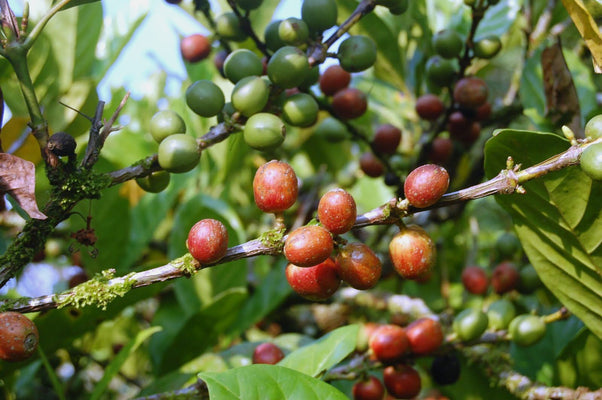
Coffee Processing: Natural, Washed, and Honey
tai attitude8 min read
Coffee processing is the process that involves separating the coffee seed from the coffee fruit. It is also the stage where fermentation is controlled.
Fermentation of the coffee fruit happens immediately after it is picked from the coffee plant. Coffee processing is crucial, as it is the stage where the method used can impact how the fermentation accelerates, which contributes significantly to the final flavour profiles in the cup.
There are many processing methods available, but there are three main processing methods for coffee that are practised by most coffee farms worldwide: natural, washed, and honey.
Coffee producers make the crucial decision of which processing method to use for their crop purely based on three deciding factors: quality, resources, and profitability.
As we will learn in this article, the process of the main three processing methods and the coffee experience (flavours) we can get from each.
Natural-Dry Process
Also known as the dry process or sun-dried coffee, natural processing is the oldest way of processing coffee.
The process
Right after coffee fruit is harvested from the coffee plants, it is weighted, cleaned, and sorted. Coffee fruits in their whole form are then spread out in thin layers on either large concrete or brick patios or raised African beds to be dried under the sun.
 Coffee fruits as a whole are dried under the sun.
Coffee fruits as a whole are dried under the sun.
The coffee fruits are raked or turned regularly by hand, several times a day, to ensure even drying for all fruits. Natural processing is very weather-dependent, so when the weather is not ideal, farmers will pile, cover, or transfer the coffee.
It may take up to four weeks to dry the coffee seed to an optimum moisture content of 10–12%. This phase is weather-dependent.
Once coffee seeds are properly dried, the whole dried fruit (husk) is removed mechanically via a huller, and the green coffee is obtained. It is then sorted, graded, and packed before being ready for export.
Information
Being the oldest method of coffee processing, natural-processed coffee is closest to how coffee tasted centuries ago. It is the original, unaltered coffee experience. To this day, natural processing remains a tradition in many coffee-producing regions.
Natural processing is commonly practised on coffee farms in dry regions or where water resources are scarce, such as Ethiopia and some parts of Brazil. It is also fairly used on many other coffee farms in many countries due to the fruitier flavour profile it creates, or, should we say, retains. Interestingly, nearly all Robusta is processed this way.
Flavour perception
The natural process is heavier on fermentation due to the fact that the entirety of the coffee fruit remains attached to the seed during the process. The result is enhanced fruitiness and sweetness. Natural-processed coffee tastes more complex and syrupy.
Common flavour notes for natural processed coffee are berries, tropical fruits, and honey-like flavours. On the flip side, if over-fermented, alcohol-like flavour notes will be created, thus lowering the quality and profitability.
Washed-Wet Process
Also known as wet process or washed coffee, washed process is the other main way to process coffee.
The process
Right after harvest, the coffee fruits are weighted, cleaned, and sorted. Within 8–12 hours, the coffee fruit’s skin and pulp are removed mechanically from the coffee seed by using a de-pulper.
Pulp is the flesh of the fruit, while mucilage is the sticky fruit material on the seed.
After de-pulping, coffee seeds with mucilage are put in a water tank for fermentation. The period of fermentation varies between 8 and 36 hours, depending on the temperature and thickness of the mucilage. When fermented for enough hours, water is then introduced to the water tank for immersion in order to remove the remainder of the skin and mucilage.
 The water in the tank gets murky as mucilage gets detached from the seeds.
The water in the tank gets murky as mucilage gets detached from the seeds.
A long tool is used to agitate the water for the mucilage to detach from the seed, as a result, the water immersed with coffee seed will turn murky over time. The murky water with mucilage is then discarded and replaced with fresh, clean water; this step is repeated until all mucilage is removed.
During the process, defective coffee seeds will float on water, while the good ones will sink into the water. The farmer usually removes the defects during this phase.
When all mucilage is removed by water, it is then ready to be dried. Drying is done on either patios or raised African beds. The seeds are turned several times a day, by rake or by hand, to achieve evenness in drying.
 Coffee seeds are dried under the sun.
Coffee seeds are dried under the sun.
It may take up to one to two weeks to dry the coffee seed to an optimum moisture content of 10–12%. This phase is weather-dependent.
Once coffee seeds are properly dried, the parchment (hull) layer is removed mechanically via a huller, and the green coffee is obtained. It is then sorted, graded, and packed before being ready for export.
Information
The washed process is more commonly practised on coffee farms in parts of Africa and countries in most of Central and South America.
The washed process has also been implemented by coffee farms in other parts of the world, as many farmers or producers will choose the washed process when this option is available to them. The reason is that the washed process is simply more consistent, easier to control, and less time-consuming. It is considered the more stable method to process coffee of the three.
On the flip side, the washed process is more expensive as it requires a station with specific equipment and a substantial quantity of water. The washed process also produces coffee wastewater as a by-product in large amounts; it is a highly acidic pollutant that can deteriorate the soil and pollute the river when not treated properly.
Flavour perception
The washed process has the coffee fruit's skin and pulp removed as soon as possible after harvesting, with mucilage remaining attached to the seed to ferment. During the washing process, the water in the tank soaking the seed also ferments the seed further in the process.
Due to long water contact, the washed coffee has enhanced aroma and acidity in the cup. Coffee tastes brighter, cleaner, and has an array of flavours.
Common flavour notes for washed-processed coffee are more floral, fruity, tea-like, etc. On the contrary, if the coffee is fermented too long in the water, it will result in high sourness and other negative flavour attributes.
Honey-Pulped Natural Process
The honey process is a unique way to process coffee, sharing similarities with the pulped natural process.
The process
Right after harvest, the coffee fruits are weighted, cleaned, and sorted. Within 8–12 hours, the coffee fruit is mechanically de-pulped with a more advanced de-pulper machine (mechanical demucilagers) to remove all skin, but can be set to leave a specific amount of pulp and mucilage intact on the seeds.
For honey processing, the producer decides the fermentation level for their crop by controlling the amount of pulp and mucilage left intact on the seeds. Fermentation level is referred to by its colours, from most pulp and mucilage to the least: black, red, yellow, and white honey.
After skin is removed, the sticky coffee seeds are then to be dried on patios or drying tables.
 Fermentation of the pulp and mucilage turns the seeds yellowish-brown in colour. In the photo is a red honey processing, dried in the shade.
Fermentation of the pulp and mucilage turns the seeds yellowish-brown in colour. In the photo is a red honey processing, dried in the shade.
Extra attention is paid to the pH, temperature, and humidity of the drying environment, which are monitored carefully. The more pulp and mucilage, the more attention to detail will be required.
Having the most pulp and mucilage, black and red honeys have more fermentation due to the presence of more sugar, are often dried slower in the shade for better control, and require more attention to detail to get it right. At the other end of the spectrum, yellow and white honeys have the least fermentation going on due to lesser pulp and mucilage and are dried quicker directly under the sun.
For all fermentation levels of honey, the seeds are also turned several times a day, by rake or by hand, to achieve evenness in drying and to prevent mould or fungal infections.
It may take up to two to three weeks to dry the coffee seed to an optimum moisture content of 10–12%. This phase is weather-dependent.
Once coffee seeds are properly dried, the parchment (hull) layer is removed mechanically via a huller, and the green coffee is obtained. It is then sorted, graded, and packed before being ready for export.
Information
The honey process is used more specifically on coffee farms in Central American countries such as Costa Rica, Nicaragua, and El Salvador. Some parts of the world practise the honey process as well due to the unique flavour profile it creates.
Sharing similarities to the honey process but different in methodology is the pulped natural process, which strips the seeds fully (no skin, no pulp, no mucilage) during de-pulping and with the use of water. Pulped natural process is mainly used in Brazil. It's more straight-forward, quicker, and cost-effective. The resulting flavour profile is different, too.
Flavour perception
The honey process is unique because there is no skin but pulp and mucilage attached to the coffee seed during the process. The sugars in the pulp and mucilage ferment the coffee seeds, resulting in enhanced sweetness and body in the coffee. Honey-processed coffee tastes bold and lower in acidity.
Honey-processed coffee has the middle ground flavour profile attributes of both natural and washed coffees, akin to the sweetness of naturals and the brightness of washed. Generally speaking, black honey is more natural-like, while white honey is more washed-like.
Honey processing has a higher failure rate; as such, investment in better equipment and higher labour costs are necessary in order to produce good honey processing, hence the most expensive processing of the three.
In summary
Coffee processing is very weather-dependent, time-consuming, and labour-intensive.
Depending on the farm or region, the methodology of processing can be slightly different, yet our understanding of natural, washed, and honey remains universal:
In the natural process, the coffee is dried with its whole fruit remaining attached to the coffee seeds.
In the washed process, the coffee fruit’s skin and pulp are removed right after harvest. The seeds are washed in water to remove mucilage and dried afterward.
In the honey process, only the coffee fruit’s skin is fully removed right after harvest. The seeds are dried with some or all of their pulp and mucilage intact.



